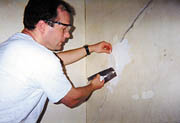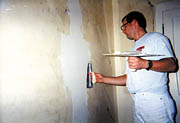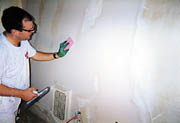
Cleaning and prefilling large cracks. After this step, apply mesh tape to the cracks.

Covering mesh with plaster.

After a second coat of is applied, use a wet sponge to smooth out the plaster.



Copyright ©2024. All Rights Reserved BNP Media.
Design, CMS, Hosting & Web Development :: ePublishing